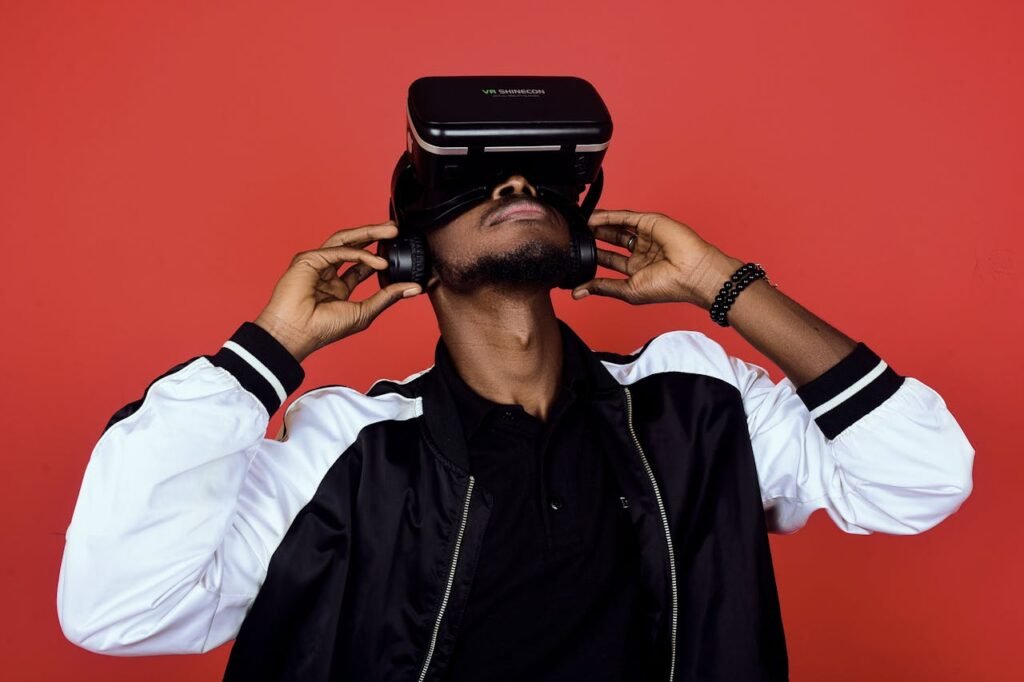The journey of recovery after limb loss is as much about rebuilding physical capabilities as it is about restoring confidence and independence. While prosthetics have long been a cornerstone of rehabilitation, Virtual Reality (VR) therapy is emerging as a powerful complement, revolutionizing the way users regain mobility and adapt to their new limbs.
Prosthetics and VR therapy, when combined, create a synergy that accelerates recovery and enhances outcomes. Together, they enable users to practice movements, overcome psychological barriers, and explore virtual environments that mimic real-world challenges—all from the safety of a controlled setting.
Understanding the Role of VR Therapy in Rehabilitation
Virtual Reality (VR) therapy is a therapeutic technique that uses immersive virtual environments to support physical and psychological rehabilitation. By engaging users in realistic scenarios, VR therapy helps them practice movements, improve coordination, and build confidence in their abilities.
How VR Therapy Works
At its core, VR therapy relies on immersive technology to create interactive, three-dimensional environments. Users wear a VR headset, which transports them to a virtual space designed to replicate real-world tasks or environments.
This simulation is coupled with motion sensors, haptic feedback devices, or prosthetics to track movements and provide real-time feedback.
For prosthetic users, VR therapy serves as a bridge between the initial fitting of the device and its full integration into daily life. It allows users to experiment with their prosthetic in a risk-free setting, refining their movements and adapting to new sensations before facing real-world challenges.
A Focus on Neural Plasticity
One of the key principles behind VR therapy is neural plasticity—the brain’s ability to reorganize and form new connections in response to experiences. After limb loss, the brain must adapt to the absence of sensory input from the missing limb.
VR therapy facilitates this adaptation by stimulating the brain with realistic sensory and motor experiences, promoting faster and more effective recovery.
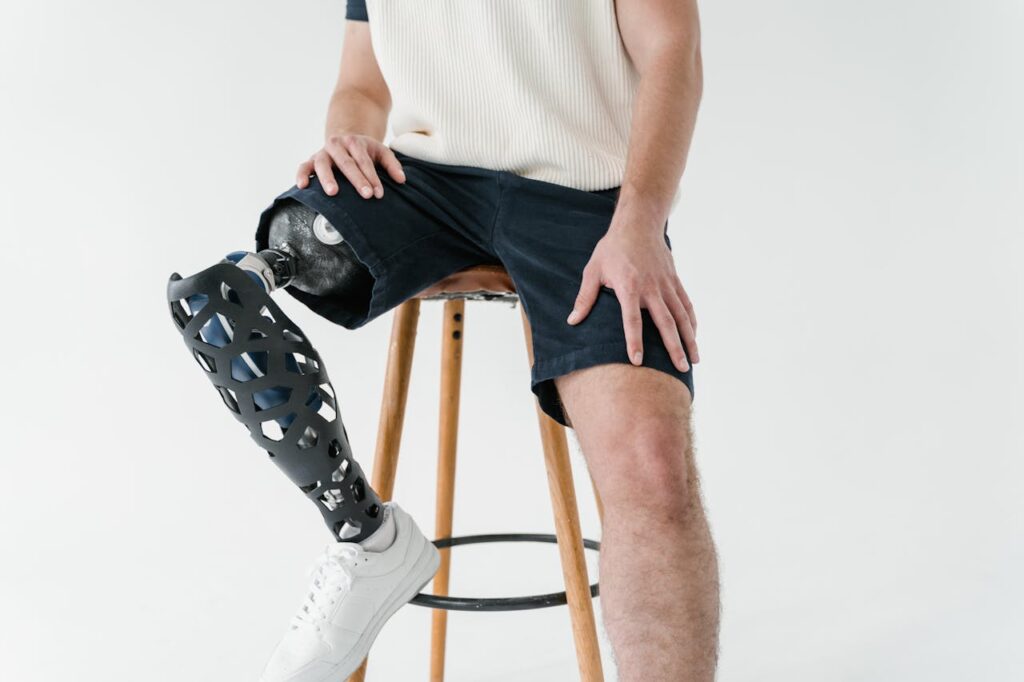
For example, a VR program might simulate the act of reaching for a cup. The user’s prosthetic arm, integrated with motion-tracking sensors, mirrors the movement in the virtual environment, helping the brain recognize the prosthetic as an extension of the body.
The Benefits of Combining Prosthetics and VR Therapy
Integrating prosthetics with VR therapy creates a dynamic rehabilitation process that addresses both physical and emotional aspects of recovery.
Building Muscle Memory
Using a prosthetic limb effectively requires the development of muscle memory—a process that involves repetitive practice to train the body to perform movements naturally. VR therapy accelerates this process by providing users with engaging, interactive exercises that mimic real-world tasks.
For instance, a user might practice walking on different terrains in a virtual environment, such as sand, grass, or stairs. This variability strengthens coordination and balance while preparing them for real-life scenarios.
The immersive nature of VR also enhances focus and motivation, making repetitive exercises more enjoyable and impactful.
Overcoming Phantom Limb Pain
Phantom limb pain is a common challenge for individuals who have undergone amputation. It occurs when the brain continues to receive signals from the missing limb, resulting in discomfort or pain.
VR therapy offers an innovative solution to this issue. Through mirror therapy simulations, VR creates the illusion of the missing limb’s presence, helping to rewire the brain’s perception and alleviate pain.
When paired with prosthetics, this approach reinforces the connection between the brain and the new limb, enhancing the overall rehabilitation experience.
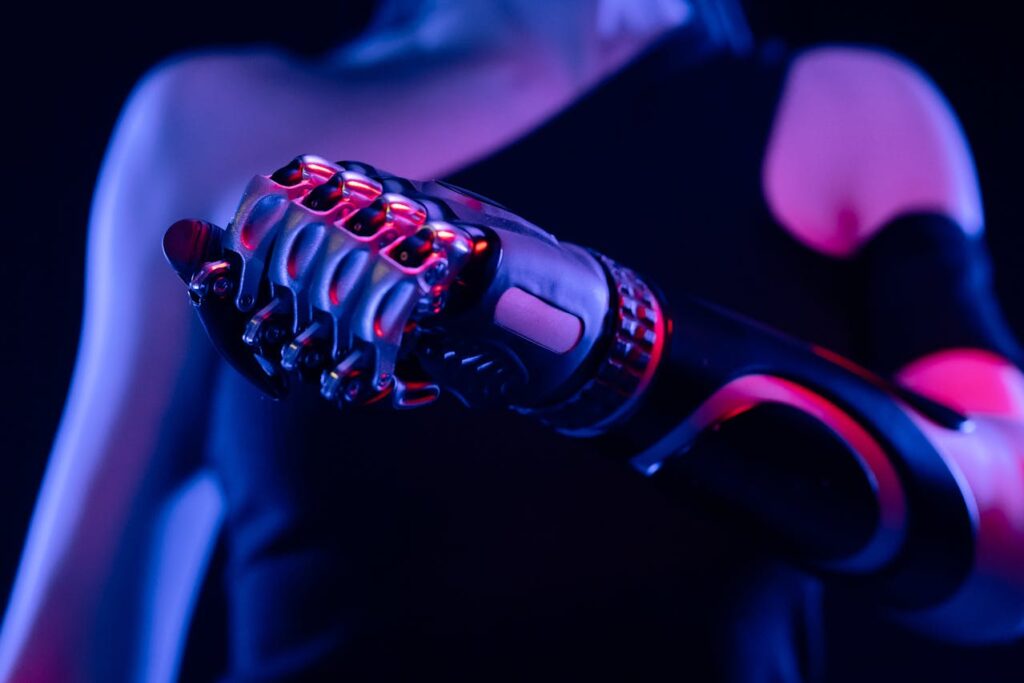
Reducing Anxiety and Building Confidence
Adapting to a prosthetic limb can be an emotionally daunting journey, often accompanied by anxiety or self-doubt.
VR therapy provides a safe and controlled environment where users can experiment with their prosthetic, make mistakes, and build confidence without fear of judgment or injury.
For example, a user who feels apprehensive about navigating crowded spaces can practice in a virtual simulation, gradually increasing their comfort level. This confidence translates to real-world settings, empowering users to regain their independence.
Applications of Prosthetics and VR Therapy in Rehabilitation
The combination of prosthetics and VR therapy has opened new possibilities for rehabilitation, addressing challenges that were once difficult to overcome. From enhancing physical recovery to tackling psychological barriers, this synergy offers a comprehensive approach to healing.
Early-Stage Rehabilitation
In the initial stages of recovery after limb loss, individuals often face challenges such as limited mobility, pain, and unfamiliarity with their prosthetic. VR therapy provides an ideal platform for gradual and controlled exposure to movement, helping users become familiar with their new limb.
For example, a patient might begin with simple tasks such as lifting objects or reaching for items in a virtual environment. These activities not only improve strength and coordination but also help the brain integrate the prosthetic into the body’s natural movement patterns.
Additionally, VR programs can be tailored to address specific rehabilitation goals, such as improving range of motion, reducing stiffness, or enhancing fine motor skills. The adaptability of VR ensures that therapy evolves alongside the user’s progress, keeping them engaged and motivated.
Advanced Mobility Training
As users gain confidence with their prosthetic, VR therapy can be used to simulate more complex scenarios that prepare them for real-world challenges.
For instance, a virtual environment might replicate busy city streets, allowing users to practice walking amidst moving obstacles, uneven surfaces, and varying lighting conditions.
Similarly, individuals with upper-limb prosthetics can practice intricate tasks such as cooking, typing, or using tools, all within the safety of a simulated setting.
This advanced mobility training helps users develop the skills they need to navigate their daily lives independently. For manufacturers and clinicians, it provides valuable insights into how users interact with their prosthetics, enabling continuous improvement of device design and functionality.
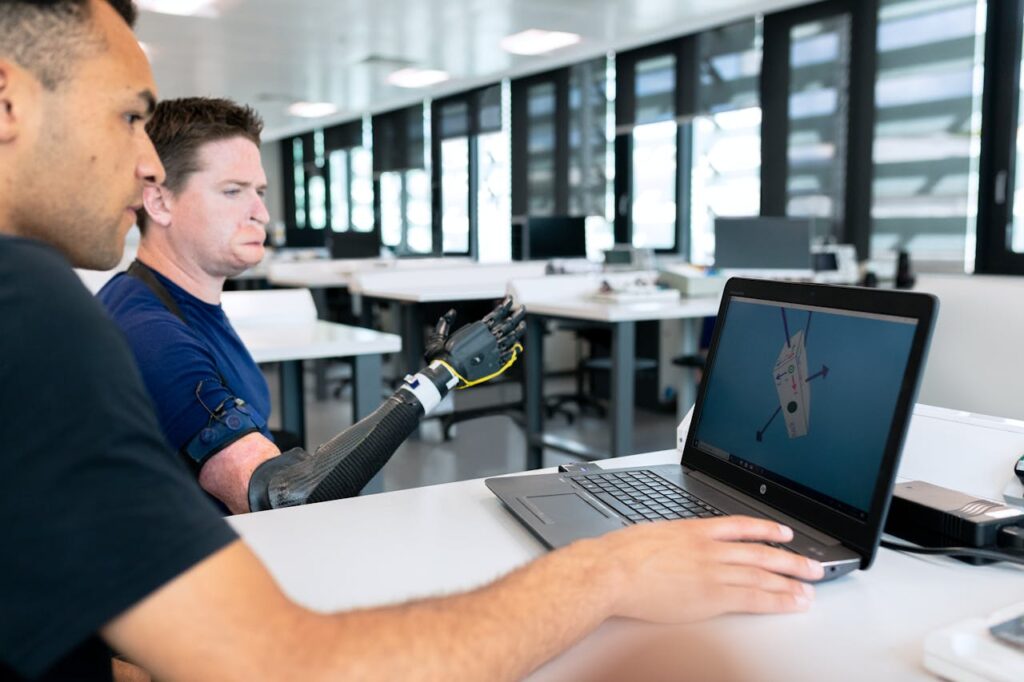
Support for Children and Adolescents
Rehabilitation for children and adolescents comes with unique challenges, including rapid physical development, shorter attention spans, and the need for age-appropriate engagement. VR therapy addresses these challenges by making rehabilitation interactive and fun.
For example, a VR program might incorporate games that require children to use their prosthetic limb to complete tasks, such as stacking blocks, catching virtual objects, or exploring a fantasy world. These activities build strength and coordination while keeping children entertained and motivated.
Prosthetics designed with adjustable features, combined with VR therapy tailored to developmental stages, ensure that young users receive effective and engaging rehabilitation as they grow.
Opportunities for Businesses in Prosthetics and VR Therapy
The integration of VR therapy with prosthetics presents significant opportunities for businesses, ranging from innovation in product development to the creation of new service models. By embracing this synergy, companies can enhance user outcomes while expanding their impact in the rehabilitation market.
Developing Smart Prosthetics
Smart prosthetics equipped with sensors and connectivity features are ideal candidates for integration with VR therapy. These devices can track movement, provide haptic feedback, and sync with VR systems to create a seamless rehabilitation experience.
For example, a smart prosthetic arm with built-in motion sensors could allow users to perform precise virtual tasks, such as assembling a puzzle or painting a digital canvas. The data collected during these activities can be used to personalize therapy plans and optimize device settings, ensuring a tailored approach to recovery.
By investing in smart prosthetic technology, businesses can position themselves as leaders in innovation, offering cutting-edge solutions that appeal to tech-savvy users and clinicians alike.
Partnering with VR Developers
Collaboration between prosthetic manufacturers and VR developers is essential for creating effective and user-friendly therapy programs. By working together, these industries can design VR environments that cater specifically to the needs of prosthetic users, incorporating realistic simulations and targeted exercises.
For instance, a joint initiative might focus on creating VR scenarios that address common challenges faced by prosthetic users, such as climbing stairs, navigating tight spaces, or handling fragile objects. These collaborations ensure that VR therapy is both practical and engaging, driving better outcomes for users.
Businesses that establish partnerships with leading VR companies or research institutions can gain access to cutting-edge technology and expand their offerings in the rehabilitation market.

The Future of Prosthetics and VR Therapy
As technology continues to evolve, the potential for integrating prosthetics and VR therapy grows even greater. Advancements in artificial intelligence, machine learning, and sensory feedback are paving the way for more personalized and immersive rehabilitation experiences.
For businesses and healthcare providers, staying ahead of these trends is critical for delivering innovative solutions that meet the needs of a diverse and evolving user base.
Artificial Intelligence for Personalized Therapy
Artificial intelligence (AI) is transforming how rehabilitation programs are designed and delivered. When combined with prosthetics and VR therapy, AI can analyze data from sensors and user interactions to create personalized therapy plans tailored to each individual’s progress and challenges.
For example, an AI-driven VR system could monitor a user’s performance during a session and adjust the difficulty level in real time, ensuring the right balance between challenge and comfort.
Similarly, AI algorithms could identify patterns in movement data to suggest specific exercises or modifications to the prosthetic device.
Businesses that integrate AI into their offerings can enhance the effectiveness of rehabilitation programs while streamlining the delivery of care. These innovations not only improve outcomes for users but also set new standards for efficiency and precision in the rehabilitation process.
Expanding Sensory Feedback Capabilities
Sensory feedback plays a crucial role in creating a natural and intuitive experience for prosthetic users. Advances in haptic technology are making it possible to replicate the sensations of touch, pressure, and texture, enhancing the realism of VR therapy.
For instance, a prosthetic hand equipped with haptic feedback sensors could allow users to feel the virtual objects they interact with during therapy. This sensory input not only improves precision and control but also strengthens the brain’s connection to the prosthetic, accelerating the adaptation process.
By prioritizing sensory feedback in their designs, businesses can create prosthetics that feel like a true extension of the body. When paired with VR therapy, these devices offer a level of immersion and engagement that transforms the rehabilitation experience.
Exploring Augmented Reality Integration
While VR creates fully immersive environments, augmented reality (AR) overlays digital elements onto the real world, offering a different set of opportunities for rehabilitation. AR integration with prosthetics could enable users to practice tasks in their actual environment, guided by virtual prompts or feedback.
For example, an AR system might project a virtual guide onto a user’s workspace, showing them how to perform a task step-by-step with their prosthetic limb. This approach bridges the gap between therapy and real-life application, making the transition to daily activities smoother and more intuitive.
Businesses that explore AR as a complement to VR therapy can expand their reach and appeal, offering users a comprehensive suite of rehabilitation tools.
Addressing Challenges in Implementation
While the integration of prosthetics and VR therapy holds immense promise, there are challenges to overcome in making these solutions widely accessible. Cost, infrastructure, and user training are key considerations that require strategic planning and collaboration.
Reducing Costs Through Scalability
High-quality prosthetics and VR systems can be expensive, creating barriers for users in low-resource settings. To address this, businesses must focus on scalable solutions that balance affordability with functionality.
For example, modular prosthetics with optional VR compatibility allow users to choose the features that fit their budget, while cloud-based VR platforms reduce the need for expensive hardware.
Leveraging cost-effective manufacturing methods, such as 3D printing, further drives down expenses, making these technologies more accessible.
By prioritizing affordability without compromising quality, businesses can expand their impact and reach underserved markets.
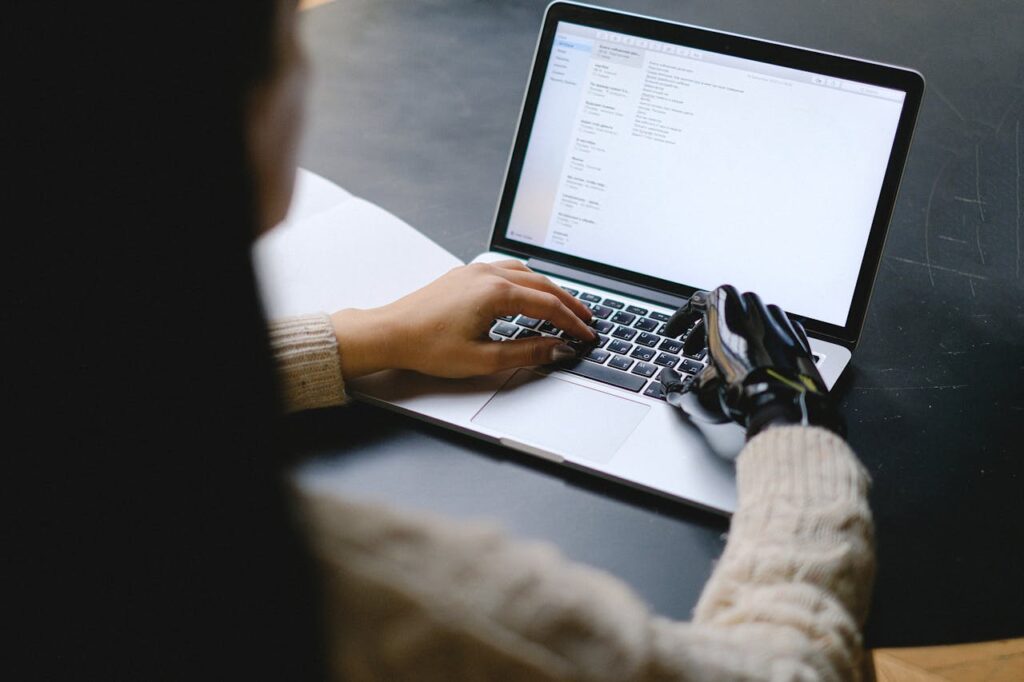
Building Infrastructure and Expertise
Successful integration of prosthetics and VR therapy requires infrastructure to support delivery and maintenance, as well as trained professionals to guide users through the rehabilitation process.
Establishing VR therapy centers, training clinicians in the use of VR systems, and developing user-friendly interfaces are critical steps in building this infrastructure.
Partnerships with hospitals, rehabilitation centers, and educational institutions can accelerate these efforts, ensuring that users receive consistent and high-quality care.
For businesses, investing in training programs and technical support services demonstrates a commitment to user success, fostering trust and long-term loyalty.
The Transformative Potential of Prosthetics and VR Therapy
The synergy between prosthetics and VR therapy is reshaping the landscape of rehabilitation, offering faster, more effective, and more engaging paths to recovery. By addressing both physical and psychological challenges, this combination empowers users to rebuild their independence and embrace their new capabilities.
Anticipating Emerging Threats
The rapid advancement of technology means that the cyber threat landscape is constantly evolving. Businesses in the prosthetics industry must adopt a forward-thinking mindset, anticipating future vulnerabilities and proactively developing solutions.
For example, as neural interfaces become more common, the potential for external interference with these connections will increase. A compromised neural interface could have profound consequences, from disrupting prosthetic functionality to affecting the user’s nervous system.
Businesses must invest in advanced encryption protocols, tamper-proof hardware, and real-time threat detection systems to address these challenges.
Staying ahead of emerging threats requires ongoing research and collaboration with cybersecurity experts. Regular threat assessments, penetration testing, and participation in industry forums allow businesses to remain informed about new attack vectors and best practices for defense.
Creating a Collaborative Ecosystem
The security of prosthetics cannot rest solely on individual manufacturers. A secure future depends on creating an ecosystem where businesses, regulators, and researchers work together to establish standards and share knowledge.
For instance, developing industry-wide frameworks for secure data exchange between devices and companion apps ensures consistency and reduces vulnerabilities.
Similarly, collaboration with government agencies can lead to the creation of certifications or compliance standards that validate the security of prosthetic devices.
By fostering a collaborative ecosystem, businesses not only enhance security but also build credibility and trust. Users are more likely to adopt technology that is backed by transparent and unified efforts from the industry.
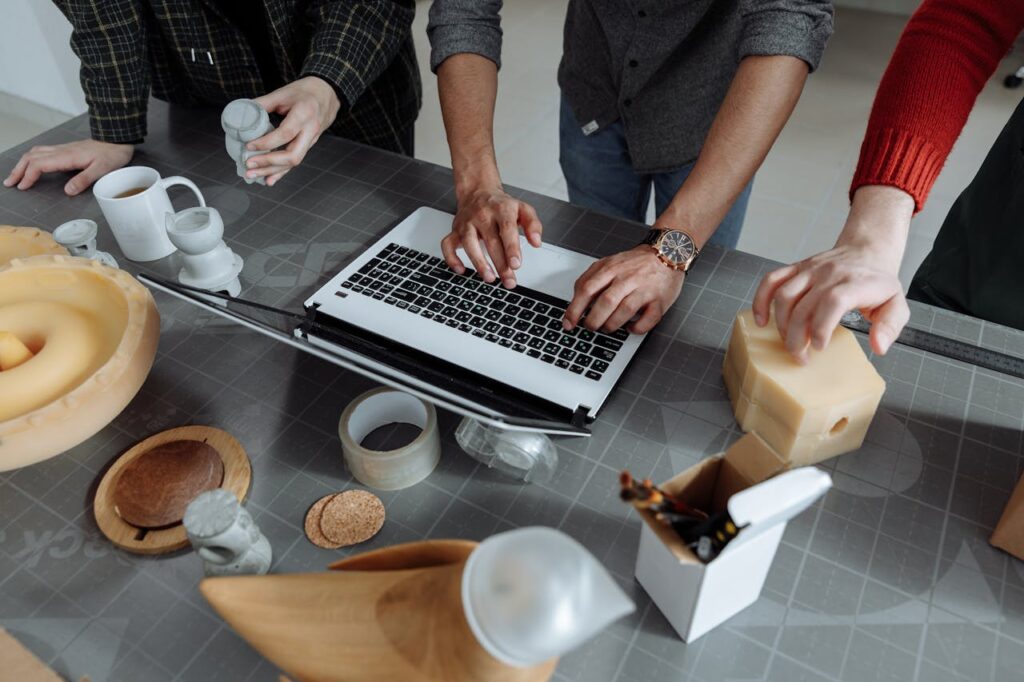
Designing with Privacy as a Priority
Privacy is a cornerstone of cybersecurity, particularly for devices that collect and transmit sensitive user data. As prosthetics become more advanced, the amount and complexity of data they handle will increase. This includes movement patterns, health metrics, and even neural signals.
Businesses must prioritize privacy in their designs, implementing features that give users control over their data.
For example, offering granular permissions for data sharing and anonymizing user information for analytics ensures that personal details are protected. Transparency about how data is stored, used, and shared further strengthens trust.
Building privacy-focused designs also involves adopting the principles of “privacy by design” and “security by design,” where every feature and functionality is developed with these priorities in mind.
Such an approach not only safeguards users but also sets businesses apart as leaders in ethical innovation.
Building Long-Term User Relationships
In a secure future for prosthetics, the relationship between businesses and users goes beyond the initial sale. Long-term engagement through regular updates, maintenance, and support is essential for maintaining security and satisfaction.
For instance, businesses can offer subscription-based services that include automatic security updates, enhanced monitoring, and priority access to customer support. Regular check-ins and feedback loops ensure that users feel supported and that their concerns are addressed.
Leveraging Artificial Intelligence for Proactive Defense
Artificial intelligence (AI) holds immense potential for enhancing cybersecurity in prosthetics. AI-driven systems can analyze large volumes of data in real time, identifying patterns and anomalies that indicate potential threats.
For example, a prosthetic with integrated AI could detect unusual commands or unauthorized access attempts and take immediate action to mitigate the risk.
AI can also play a role in predictive security, where algorithms identify vulnerabilities before they are exploited. This allows businesses to address issues preemptively, reducing the likelihood of breaches.
Investing in AI for cybersecurity not only improves device resilience but also demonstrates a commitment to innovation and user protection. Communicating these efforts to users reinforces confidence in the technology and its ability to adapt to future challenges.
Educating and Empowering Users
No matter how advanced the technology, users remain a critical part of the cybersecurity equation. Empowering users with knowledge about potential risks and best practices ensures that they can actively contribute to the security of their prosthetic devices.
For example, businesses can provide resources that teach users how to recognize phishing attempts, update firmware securely, and avoid unsafe networks. Workshops, webinars, and easy-to-understand guides can make this education accessible to users of all technical skill levels.
Empowered users not only benefit from improved security but also become advocates for the brand, sharing their positive experiences and building trust within the community.
Conclusion
The integration of prosthetics and VR therapy marks a groundbreaking advancement in rehabilitation, combining the best of technology and human ingenuity to address the multifaceted challenges of recovery.
This synergy empowers users to regain mobility, build confidence, and navigate real-world challenges through immersive, engaging, and personalized therapy programs.
For users, this approach provides more than just a pathway to physical recovery—it fosters emotional resilience and independence, transforming prosthetic rehabilitation into a truly holistic experience.
By embracing VR therapy, individuals can practice, learn, and adapt in a supportive environment that bridges the gap between therapy and everyday life.



